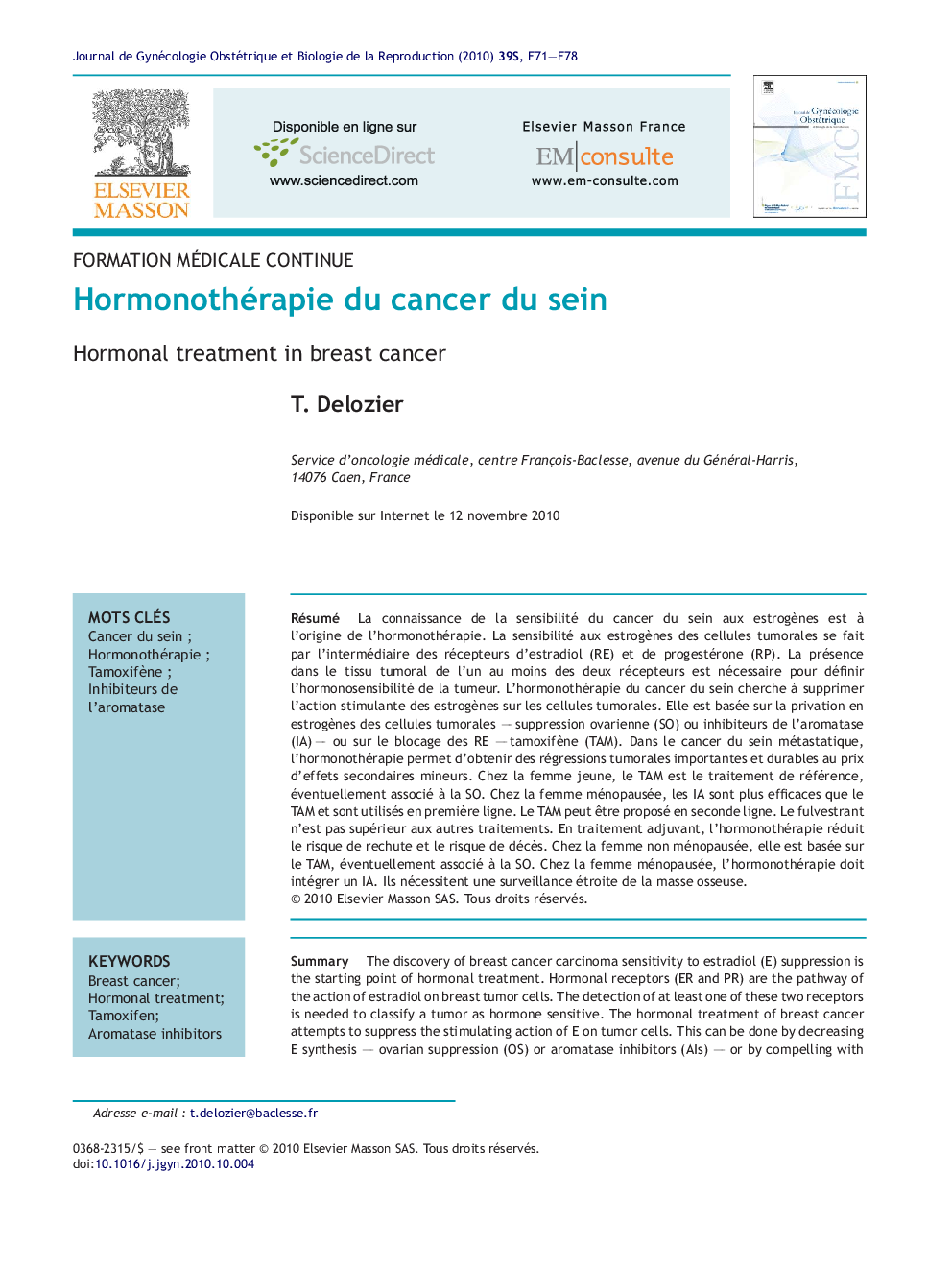| Article ID | Journal | Published Year | Pages | File Type |
|---|---|---|---|---|
| 3273119 | Journal de Gynécologie Obstétrique et Biologie de la Reproduction | 2010 | 8 Pages |
Abstract
The discovery of breast cancer carcinoma sensitivity to estradiol (E) suppression is the starting point of hormonal treatment. Hormonal receptors (ER and PR) are the pathway of the action of estradiol on breast tumor cells. The detection of at least one of these two receptors is needed to classify a tumor as hormone sensitive. The hormonal treatment of breast cancer attempts to suppress the stimulating action of E on tumor cells. This can be done by decreasing E synthesis - ovarian suppression (OS) or aromatase inhibitors (AIs) - or by compelling with E on receptors - tamoxifen (TAM). In advanced breast cancer, hormonal treatment gives good response with few side effects. In young patient, the treatment is based on TAM. It could be associated with OS. In post-menopausal women, AIs are more potent than TAM. They are used in the first line treatment and TAM as a second line. Fulvestrant is not superior TAM or AIs. In the adjuvant setting, hormonal treatment gives a significant reduction of recurrence and death. In young patient, the treatment is based on TAM. It could be associated with OS. In post-menopausal patients, adjuvant treatment must include an AIs for at least one part of the treatment. A survey of bone density is necessary.
Keywords
Related Topics
Health Sciences
Medicine and Dentistry
Endocrinology, Diabetes and Metabolism
Authors
T. Delozier,
